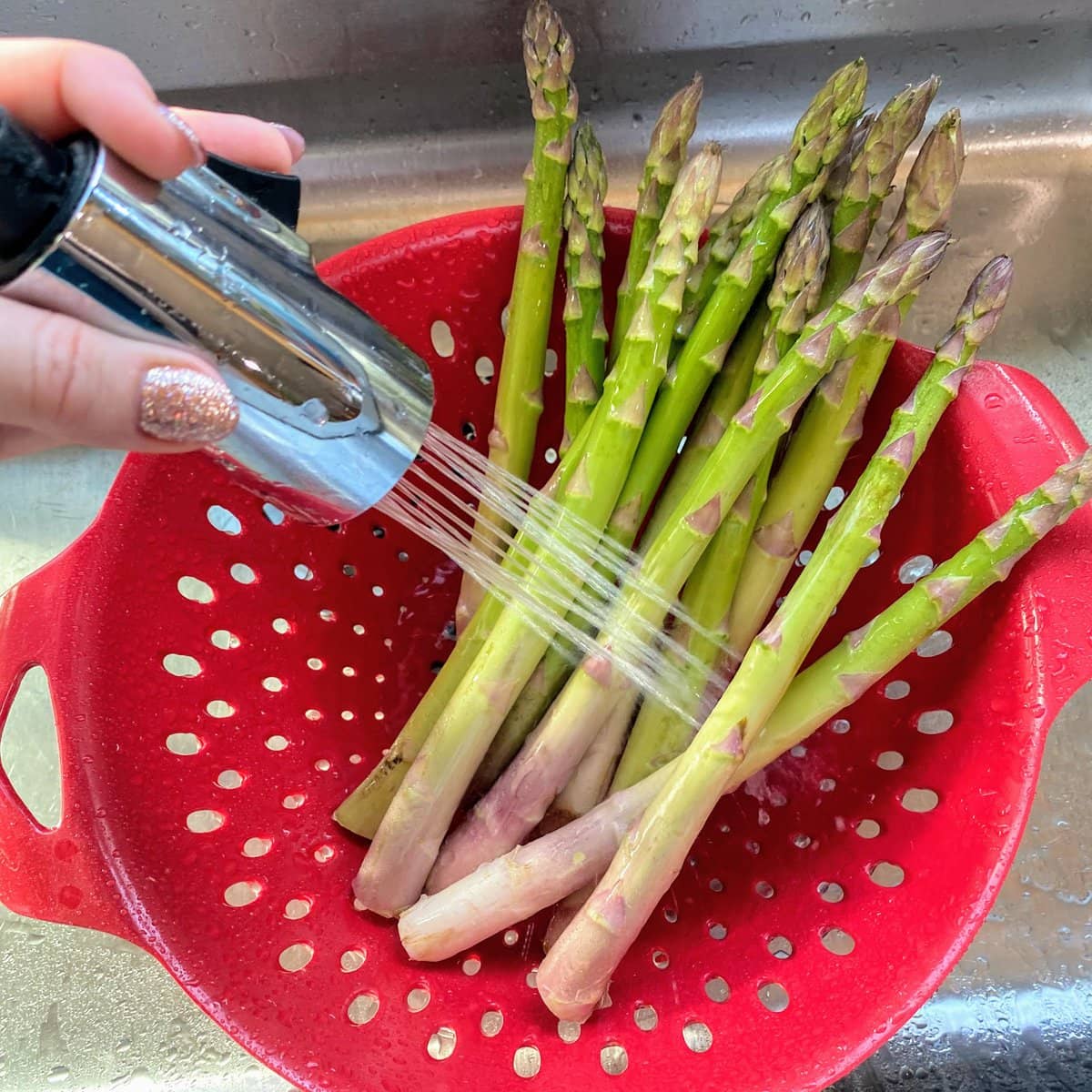Tips to Wash Fruit and Vegetables Effectively
Do you wash your fruit and vegetables before eating them or adding them to a recipe? Cleaning your produce is an excellent practice for preventing food contamination in your home. Here learn the best tips for cleaning your produce so that you and your family can remain healthy.

Want to Save this Recipe or Activity?
Enter your email and we will send it straight to your inbox! You’ll also get the latest posts from Platein28!
By submitting this form, you consent to receive emails from Platein28.
🤔 Why Do We Wash Our Produce?
When we buy produce from the store, bacteria and food-borne illnesses can contaminate our fruit and vegetables. By rinsing and washing the produce, you can nearly rid the food of this bacteria, ensuring it’s safer to consume. Washing produce can help keep your foods fresh for entertaining a group of people or just cooking for your family at home.

🚿 First Rinse, Then Peel
It’s common to think that if you’re gonna peel a veggie, you don’t have to rinse it first…but think again. If you peel produce before washing, your blade could encounter bacteria and spread it, maybe even more so once you cut the vegetable. Thoroughly rinse the produce before peeling and cutting to minimize contamination.
🍓 Soak Delicate Produce
Examples of delicate produce: berries, broccoli, kale, chard, mustard greens
The bare minimum for washing your fruits and vegetables is to rinse them under the sink. However, this might not rid the produce of all bacteria. A brief soaking can help, especially for more delicate foods, such as raspberries. Right after you get back from the market, fill a bowl with water and a couple dashes of white vinegar. Then add your produce and soak for 1-2 minutes. The vinegar will naturally kill bacteria and increase the longevity of the produce. I can’t recommend this enough!
Tip on 🥬 greens: after you soak your greens, pull apart the leaves and place them in a salad spinner. The salad spinner will help dry the greens by extracting excess water.
Tip on 🍄 mushrooms: soaking is not the best. Mushrooms are porous and will take in too much water from a soak. Instead, gently rinse or rub them with a damp paper towel to clean.
🥕 Scrub Firm Produce
Examples of firm produce: carrots, potatoes, turnips, cucumbers, apples
Have you ever considered scrubbing your produce? Produce with tougher skin (such as carrots) benefit from a light scrubbing with a soft-bristled brush to really eliminate bacteria from the food. Don’t be too vigorous with this or you could damage or bruise the produce. After the scrub, lightly rinse the produce.
Tip on 🥔 potatoes: according to @BrunchwithBabs, a great tip for cooking with lots of potatoes (e.g. on a holiday for a big group) is to put them in the dishwasher for a quick rinse cycle (no soap!). By the way (not sponsored), you should follow her cause she’s helpful and hilarious!
💨 Use a Drying Method
Once you wash your fruit and vegetables, you want to dry them before they’re stored away. Depending on the produce, you can either leave it on a towel to dry or lightly pat with a paper or cloth towel to remove moisture. For some delicate produce, like arugula, pat dry as best you can and then place in the fridge, wrapped in a loose dry paper towel (to remove excess moisture). For some produce that comes in stalks, like celery and asparagus, pat dry and store in the fridge wrapped in a damp paper towel (to keep fresh with some moisture). Full Circle has these and more tips in their helpful guide on how to store different types of produce.
Lesson of the day, class (ha ha): always wash your fruit and vegetables before consuming (unless the produce packaging says it’s pre-washed). For produce you plan to eat in the next couple days, we recommend rinsing and cleaning it right when you bring it home. If you have yet to do this practice in your home, now is the time to start.






